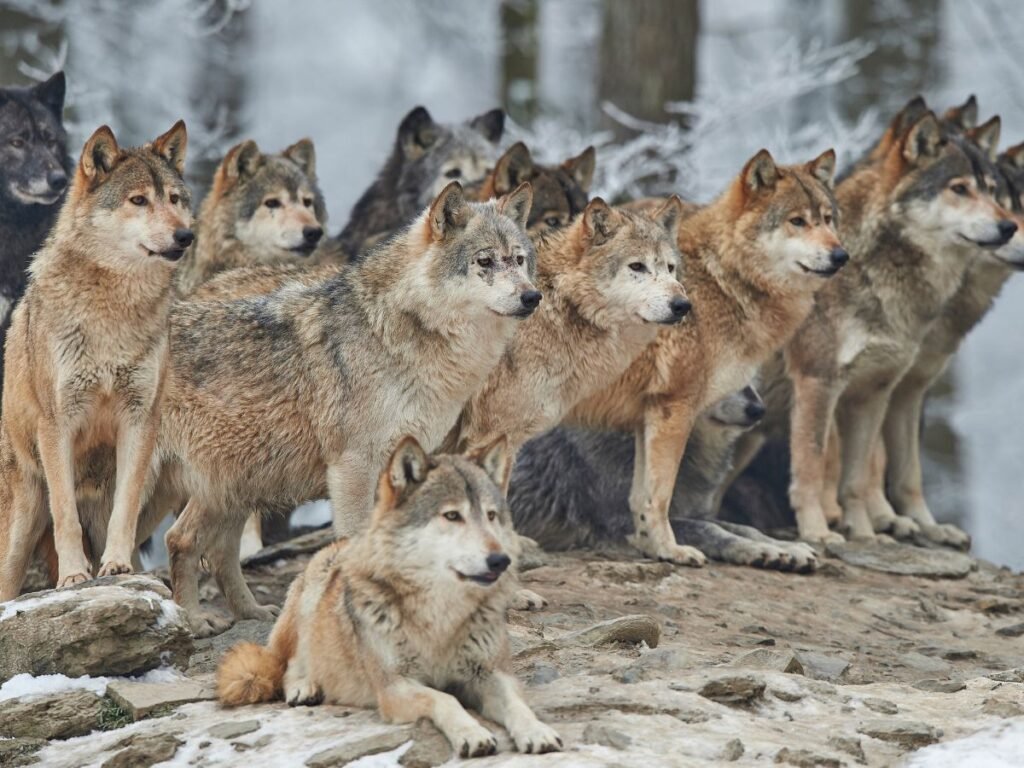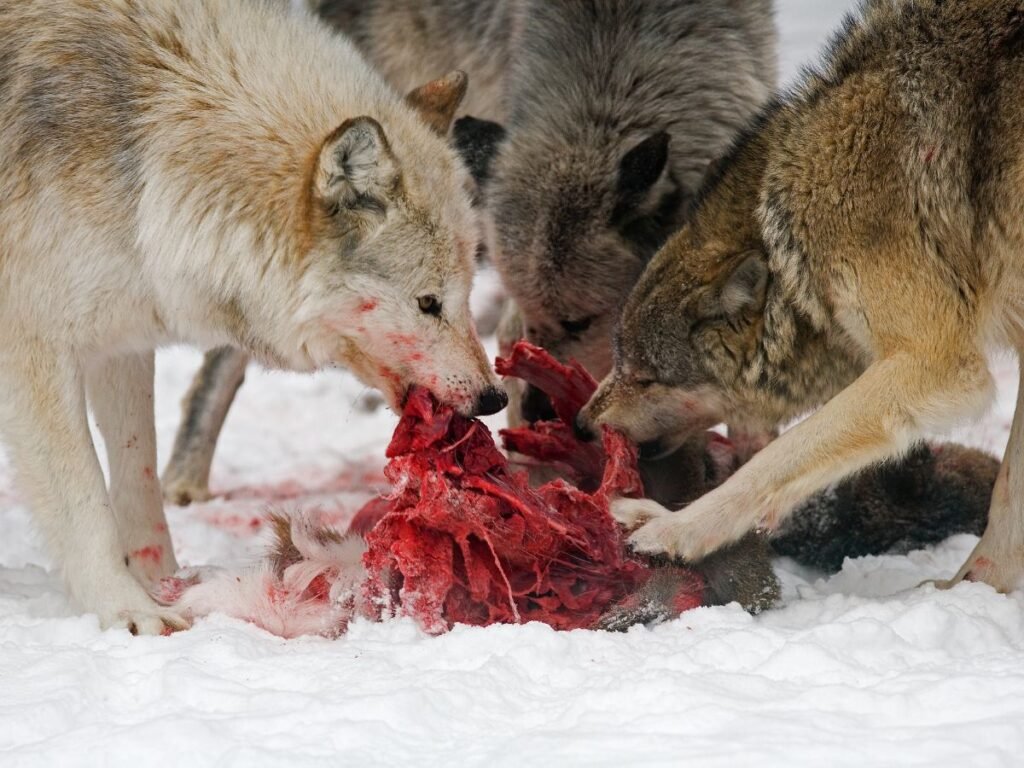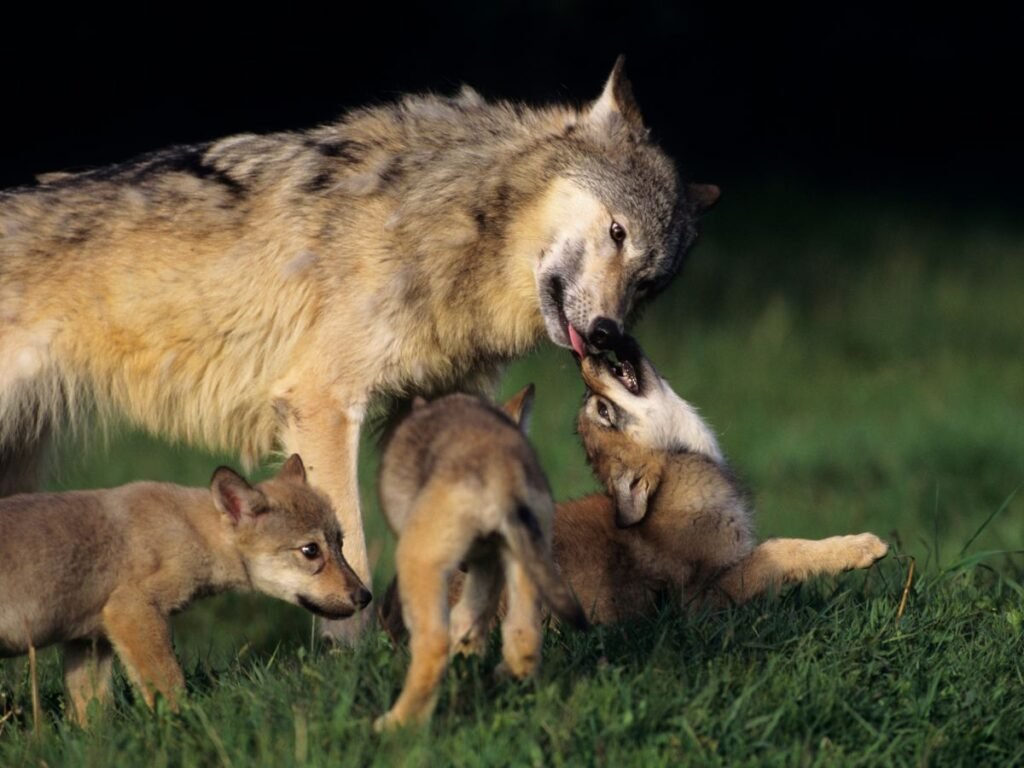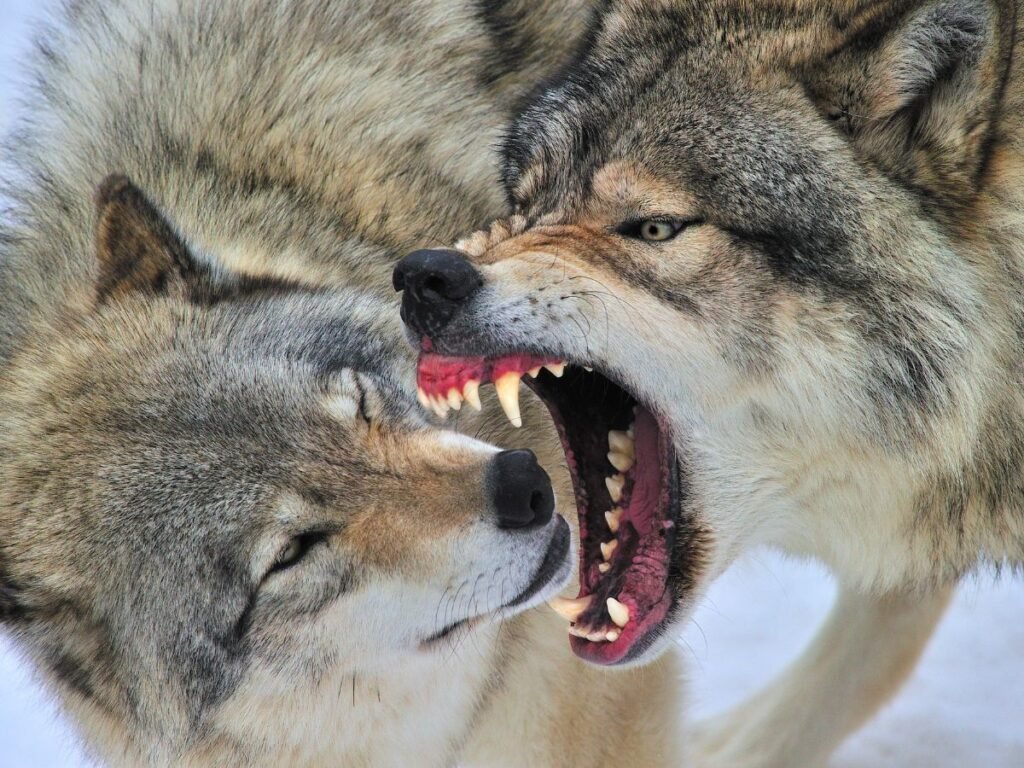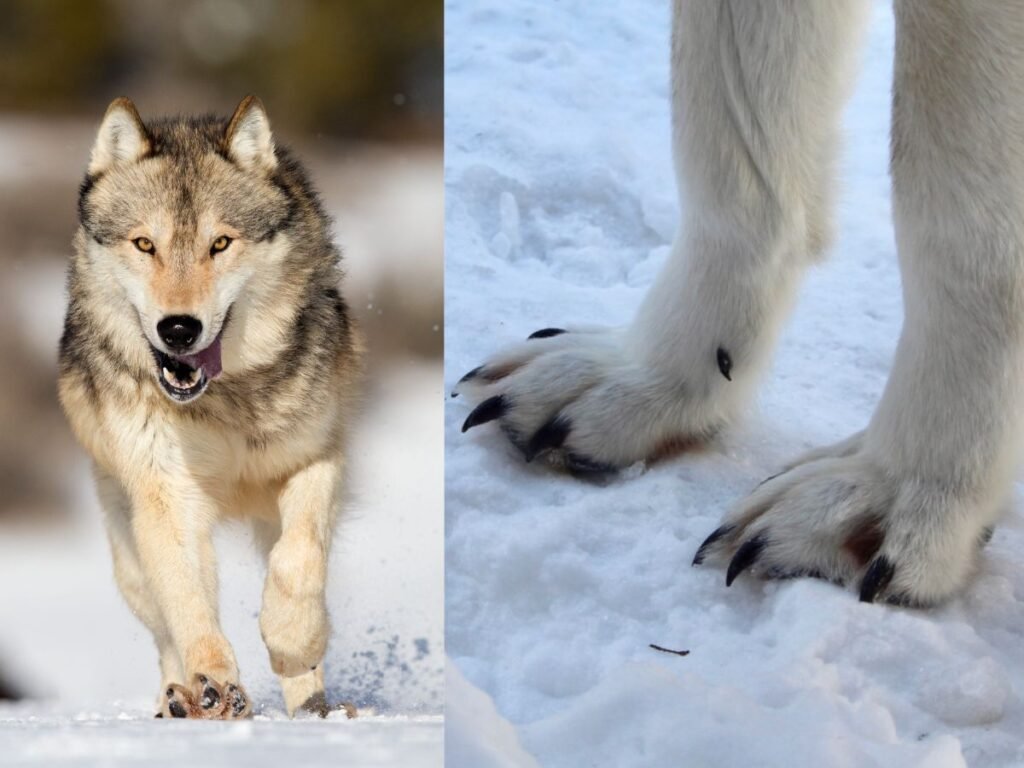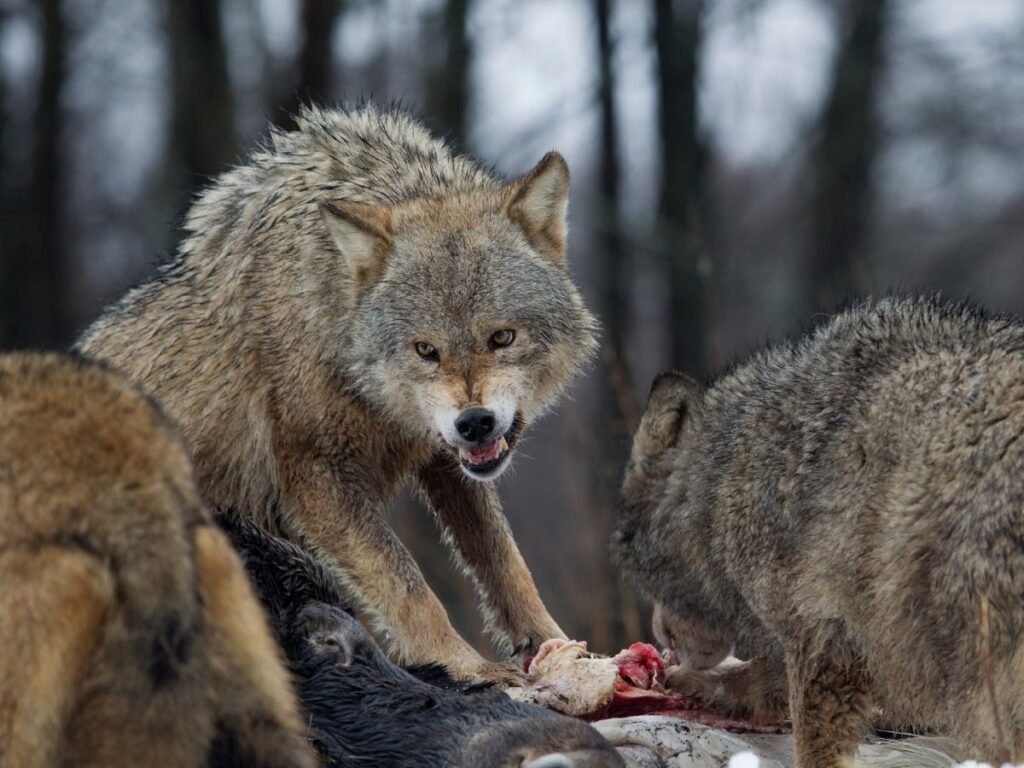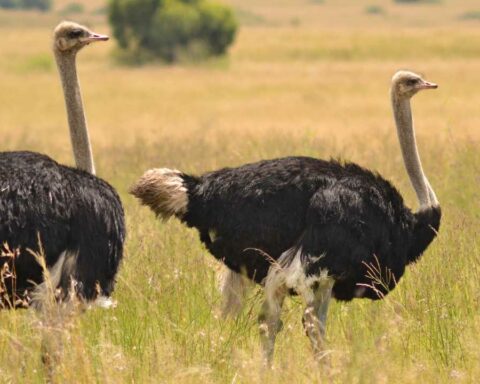Wolves are a remarkable species that have evolved a range of adaptations to help them survive and thrive in their environment. From their structural adaptations such as powerful muscles and keen senses to their physiological adaptations such as an efficient digestive system and strong immune system, wolves are a testament to the power of evolution. However, perhaps one of the most fascinating aspects of wolves is their behavioral adaptations. These social animals live in complex family groups and have developed a range of behaviors to communicate with each other, hunt effectively, and defend themselves against predators.
In this article, we will explore the different types of adaptations of a wolf that it has developed to survive in their environment. We will delve into the structural adaptations that allow wolves to run quickly and capture prey, the physiological adaptations that enable them to digest and absorb nutrients from their diet, and the behavioral adaptations that help them communicate and work together as a pack.
Adaptations Of A Wolf
Behavioral Adaptations Of A Wolf
Wolves are highly social animals that live in complex family groups known as packs. In order to survive and thrive in their environment, they have developed a range of behavioral adaptations that allow them to communicate with each other, hunt effectively, and defend themselves against predators. From their coordinated hunting strategies and complex vocalizations to their social hierarchies and pack structure, the behavioral adaptations of wolves are a testament to their intelligence and adaptability. Here, we will explore some of the key behavioral adaptations of wolves and how they have contributed to the success of these remarkable animals.
Pack behavior:
Wolves are highly social animals and live in packs that consist of a dominant breeding pair, their offspring, and sometimes other unrelated wolves. Pack behavior allows wolves to hunt more efficiently, protect their territory, and defend themselves against predators. Within the pack, each wolf has a specific role, and they work together as a team to achieve common goals. The pack also provides a social structure that promotes cooperation and reduces conflict.
Hunting tactics:
Wolves are excellent hunters and have developed several tactics to catch their prey. For example, they may chase their prey over long distances until it becomes exhausted, or they may work together as a team to surround and isolate their prey. Wolves are also opportunistic hunters and will eat a variety of prey, from small rodents to large ungulates. Their hunting tactics are highly adaptable, and they can change their strategies depending on the availability of prey and other environmental factors.
Communication:
Wolves use a variety of vocalizations, body postures, and facial expressions to communicate with each other. For example, they may howl to signal the location of their pack or to communicate with other wolves in the area. Wolves also use scent marking to communicate with other wolves and to mark their territory. They have scent glands in their paws, and they will rub them against objects to leave their scent behind.
Territorial behavior:
Wolves defend their territory from other wolves and predators. They use scent marking, vocalizations, and aggressive displays to warn other wolves to stay away. Wolves are highly territorial and will defend their territory vigorously. They also have a well-defined home range that they patrol regularly to maintain their dominance.
Adaptability:
Wolves are highly adaptable and can survive in a wide range of habitats, from forests to deserts. They are also able to change their hunting tactics and prey preferences depending on the availability of food. For example, if their preferred prey is scarce, they may switch to hunting smaller or less desirable prey.
Social hierarchy:
Wolves have a well-defined social hierarchy within their pack, with a dominant breeding pair at the top. This hierarchy helps to maintain order and prevent conflicts within the pack. Each wolf knows its place in the hierarchy, and they interact with other pack members accordingly. The dominant pair is responsible for leading the pack and making important decisions.
Parental care:
Wolves have a strong parental bond, and both parents are involved in caring for their young. This includes hunting for food, protecting them from predators, and teaching them important survival skills. The young wolves stay with their parents for up to two years before leaving to form their own pack.
Structural Adaptations Of A Wolf
Wolves are highly adaptable animals that have evolved a range of structural adaptations to help them survive in their environment. These adaptations allow them to hunt, communicate with other pack members, defend themselves against predators, and regulate their body temperature in extreme environments. From their sharp teeth and claws to their powerful muscles and keen senses, the structural adaptations of wolves are a testament to their evolutionary success. Here, we will explore some of the key structural adaptations of wolves and how they help these animals thrive in the wild.
Teeth and jaw structure:
Wolves have sharp, pointed teeth and powerful jaws that are well-adapted for hunting and eating prey. Their canines are long and sharp, which allows them to grab and hold onto prey. Their molars are large and have a strong crushing force that helps them break down bones and other tough parts of their prey.
Fur:
The fur of wolves is dense, insulating, and water-resistant. This helps to keep them warm in cold environments and protects them from the elements. Their fur also helps to camouflage them in their natural habitat, making it easier for them to hunt and avoid predators.
Paws:
Wolves have large, padded paws that help them navigate different types of terrain. Their paws are also equipped with sharp claws that allow them to grip the ground and climb over obstacles. The pads on their paws are also tough and durable, which helps them to walk on rough surfaces and protects their feet from injury.
Legs and body:
Wolves have strong, muscular legs that allow them to run at high speeds for long distances. Their body is also streamlined and agile, which makes it easier for them to maneuver through different types of terrain. Their long legs and agile body help them to chase down prey and avoid danger in their environment.
Sense organs:
Wolves have highly developed sense organs that are well adapted to their environment. Their sense of smell is particularly acute and helps them to track prey over long distances. Their eyes are also well adapted for hunting and are able to detect movement in low light conditions. Their ears are also sensitive and can pick up sounds from a long distance.
Size and weight:
Wolves are relatively large and strong animals, which gives them an advantage in hunting and defending themselves. Male wolves can weigh up to 175 pounds, while females can weigh up to 120 pounds. Their size and weight allow them to take down large prey and defend themselves against predators.
Physiological Adaptations Of A Wolf
Wolves are fascinating animals that have adapted to thrive in a wide range of environments, from the frozen tundra of the Arctic to the deserts of the Southwest. One of the keys to their success is their remarkable array of physiological adaptations, which allow them to survive in these challenging environments. These adaptations include changes to their digestive, cardiovascular, respiratory, and immune systems, as well as their reproductive and urinary systems. Here, we will delve into some of the key physiological adaptations of wolves and explore how they have enabled these animals to become one of the most successful predators in the animal kingdom.
Digestive system:
Wolves have a specialized digestive system that allows them to digest and absorb nutrients from a high-protein, high-fat diet. Their digestive system has adapted to digesting large quantities of meat, including bones and other tough parts of their prey. They have a relatively short digestive tract, which allows them to process food quickly before it spoils.
Cardiovascular system:
Wolves have a highly efficient cardiovascular system that allows them to maintain a high level of activity for extended periods of time. Their heart is large and muscular, which allows them to pump blood to their muscles quickly. They also have a high red blood cell count, which helps to carry oxygen to their muscles more efficiently.
Respiratory system:
Wolves have a highly efficient respiratory system that allows them to take in large amounts of oxygen during physical activity. Their lungs are large and have a high surface area, which allows for greater gas exchange. They are also able to increase their breathing rate during times of increased activity to meet their oxygen demands.
Thermoregulation:
Wolves are adapted to survive in cold environments and have several physiological adaptations that help them regulate their body temperature. They have a thick layer of fur that insulates them from the cold and reduces heat loss. They also have a high metabolic rate, which helps to generate heat. During times of extreme cold, they are able to constrict blood vessels in their extremities to reduce heat loss.
Immune system:
Wolves have a strong immune system that helps them fight off infections and diseases. They produce a variety of antibodies and immune cells that help them recognize and destroy foreign invaders. Their immune system has also adapted to living in close proximity to other wolves, which can increase the risk of disease transmission.
Reproductive system:
Wolves have a reproductive system that is adapted to living in social groups. Female wolves typically mate with only one or two males, and the entire pack helps to care for the young. This social structure helps to ensure the survival of the pack and provides a stable environment for raising the young.
Urinary system:
Wolves have a specialized urinary system that allows them to conserve water in their desert environments. They are able to produce concentrated urine, which helps them conserve water and stay hydrated in arid environments.
In conclusion, wolves are a remarkable species that have evolved a range of adaptations to help them thrive in their environment. Their structural adaptations allow them to run quickly and capture prey, their physiological adaptations enable them to digest and absorb nutrients from their diet, and their behavioral adaptations help them communicate and work together as a pack. All of these adaptations have contributed to the success of wolves as one of the most successful predators in the animal kingdom.
In the end, the adaptations of wolves remind us of the incredible power of nature and the importance of preserving our planet’s diverse ecosystems. By protecting these ecosystems and the animals that inhabit them, we can ensure that future generations will be able to appreciate the beauty and wonder of the natural world, just as we have.

